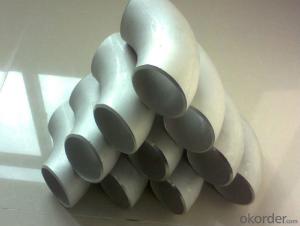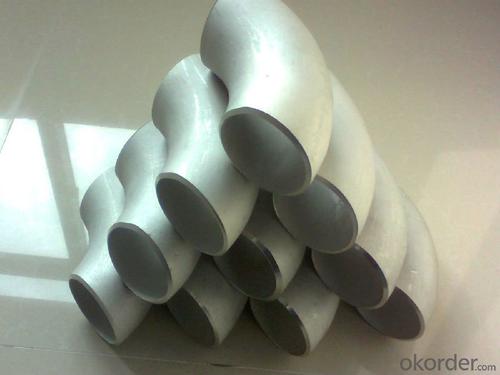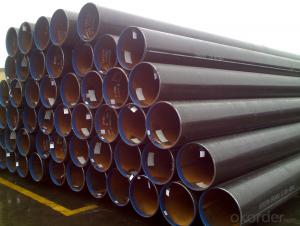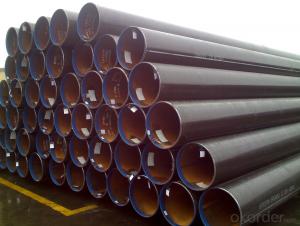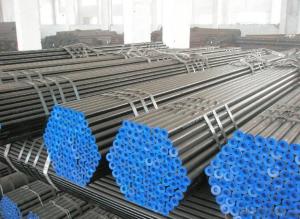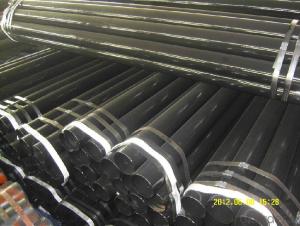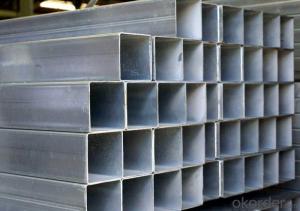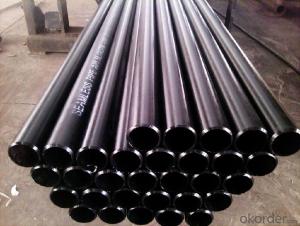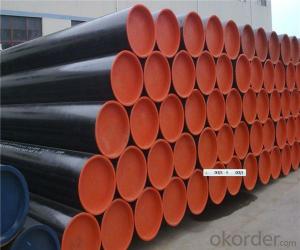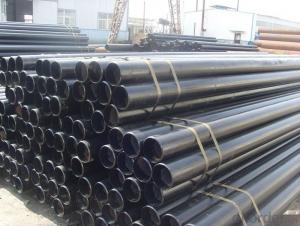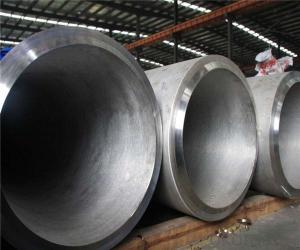Ansi ,Din,jis Stainless Steel Elbow from CNBM
- Loading Port:
- Tianjin
- Payment Terms:
- TT OR LC
- Min Order Qty:
- 100 m.t.
- Supply Capability:
- 3000 m.t./month
OKorder Service Pledge
OKorder Financial Service
You Might Also Like
Product Description:
1、 Structure of Ansi ,Din,jis Stainless Steel Elbow Description:
Stainless Steel Elbow is a kind of common pipe fitting used to switch the directions of pipelines in the pipe system. It can allow the pipeline to make a turn at an angle. The features of stainless steel can provide some benefits for the elbow. Because of the chromium content, the stainless steel elbow can be used for longer time. The stainless steel elbow can be widely used in various industries equipments.
2、Main Features of Ansi ,Din,jis Stainless Steel Elbow:
Relatively light weight
Optional torsional strength
Support high pressure
Resist corrosion
Reasonable price
3、 Ansi ,Din,jis Stainless Steel Elbow Images:
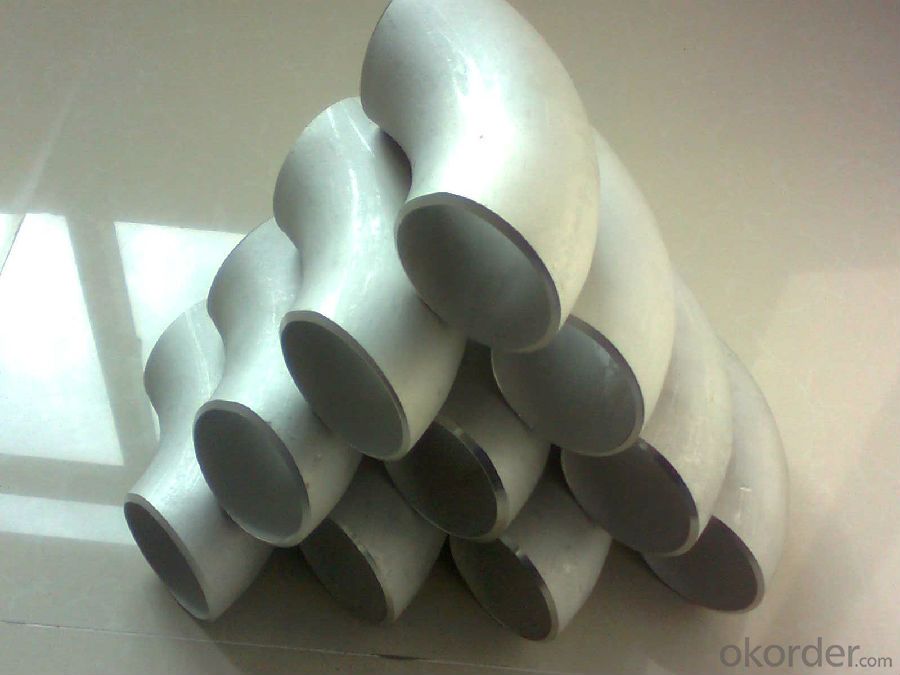
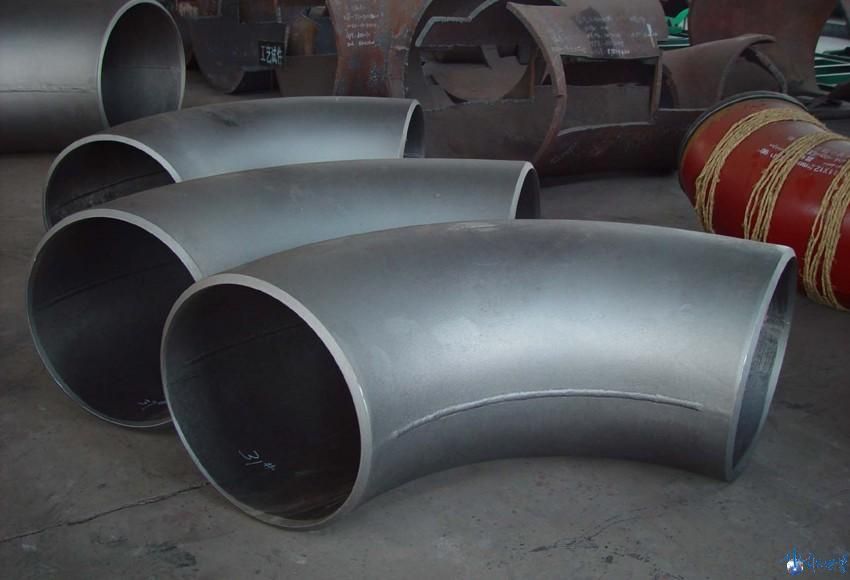
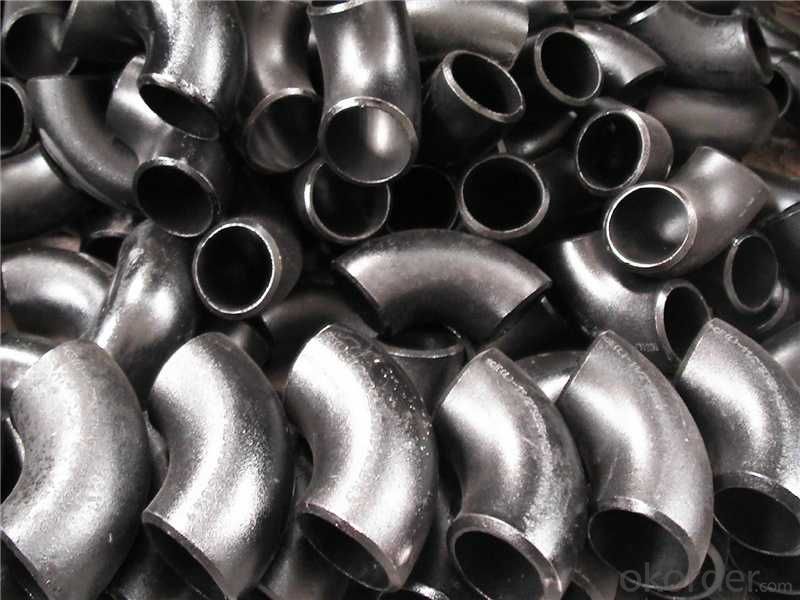
4、 Ansi ,Din,jis Stainless Steel Elbow Specification:
HOT SALE elbow
1 Radius:1D-3D
2 size: DN15~DN1800
3.Thickness : 2.8~60mm.
4.Certificate : ISO9001:2000 ,API.
FIRST :the information of our company
we specialize in this field for 14 years, Existing staff more than 300 people, fixed assets of 4 million dollars, current assets 8 million dollars, My company more than 90% for exports,.We have passed ISO9001:2000, API certifications.
SECOND :the standard of the products
Standard: | ANSI B16.9/16.28,ASME B36.10M-1996. |
JIS P2311 /2312/2313 SGP | |
DIN 2605 / 2615/2616/2617 | |
GOST 17379-2001 /17375-2001 /30753-2001/17378-2001 | |
API | |
BS | |
EN | |
GB |
Elbow | DN15~DN1800 |
Flange | DN~DN4000 |
Tee | DN15~DN1800 |
Reducer | DN15~DN1800 |
Cap | DN15~DN1800 |
Seamless Steel pipe | DN15~DN600 |
ERW | DN15~DN1800 |
SSAW | DN200~DN3600 |
LSAW | DN300~DN1400 |
Wall thickness | SCH10-XXS |
THIRD :the information of the products
Stainless steel elbow | |
Other productions: | butt welded and seamless pipe fittings , such as tee, cross, cap, bend, 45D/90D/180D LR/SR elbow. |
Material: | Carbon steel (ASTM A234WPB, A234 WPC , A420 WPL6 ). St45.8 A105 A106 STPG42 |
Stainless steel (ASTM A403 WP304/WP304L/WP316/WP316L). | |
Alloy steel (ASTM A234 WP12/WP11/WP22/WP5/WP9/WP91). | |
Size: | Seamless elbow:1/2"~24" DN15~DN600 |
Welded Elbow: 1/2”~72" DN15~DN1800 | |
Thickness: | SCH10~SCH160,STD ,XS ,XXS sch5s, sch20s, sch40s, sch80s,SGP./ 2.8mm~60mm |
Surface treatment: | Transparent oil, rust-proof black oil hot galvanized |
Productivity: | 1000 T/month |
Min order: | 100pieces |
Delivery Term: | FOB(30deposite the balance before shipment) CIF or C&F(30% deposite , the balance aginst with the copy of B/L) |
Remark: | 1. Special design available according to requirement 2. All the production process are made under the ISO9001:2000 ,API,CCS |
5、FAQ of Ansi ,Din,jis Stainless Steel Elbow
①How to guarantee the quality of the products?
We have established the international advanced quality management system,every link from raw material to final product we have strict quality test;We resolutely put an end to unqualified products flowing into the market. At the same time, we will provide necessary follow-up service assurance.
②How long can we receive the product after purchase?
In the purchase of product within three working days, We will arrange the factory delivery as soon as possible. The pecific time of receiving is related to the state and position of customers.
③ How can we get more information?
You can contact us by Email or call us directly and we will do our best to give you valuable information as much as possible but this service is not available on weekends.
- Q: How are steel pipes used in the manufacturing of heat exchangers?
- Steel pipes are commonly used in the manufacturing of heat exchangers due to their strength, durability, and ability to withstand high temperatures and pressures. These pipes are typically used to create the primary heat transfer surfaces within the heat exchanger, allowing for efficient transfer of heat between two fluids. The steel pipes are often arranged in a coil or tube bundle configuration, providing a large surface area for heat exchange to occur. Additionally, the corrosion-resistant properties of steel make it an ideal choice for handling various fluids in heat exchanger applications.
- Q: What is the pressure rating of steel pipes?
- The pressure rating of steel pipes can vary depending on factors such as the size, wall thickness, and specific grade of the steel used. However, steel pipes are commonly available in pressure ratings ranging from a few hundred PSI (pounds per square inch) to several thousand PSI, making them suitable for a wide range of applications.
- Q: What is the diameter of the steel tube DN20?
- Stress: the nominal diameter is not the outer diameter of the pipe, nor the inner diameter of the tube. It is not the average value of the inside and outside diameter (the nominal diameter of the equipment refers to the outer diameter).
- Q: How do steel pipes handle vibrations?
- The effectiveness of handling vibrations is a well-known attribute of steel pipes. Their strong and rigid nature enables them to withstand various types of vibrations, including mechanical vibrations and seismic activities. The structural integrity and strength of steel pipes are responsible for their resilience. Steel pipes possess high tensile strength, which allows them to resist deformation or breakage when exposed to vibrations. They also exhibit resistance to fatigue, meaning they can endure repeated vibrations without suffering significant damage. This quality makes steel pipes ideal for applications involving constant or cyclic vibrations, such as in industrial settings or for fluid transportation through pipelines. Furthermore, steel pipes have the added advantage of being able to dampen vibrations due to their mass. The weight of the steel pipe aids in absorbing and dissipating the energy generated by vibrations, preventing excessive movement or oscillation. This damping effect contributes to the overall stability and durability of the pipe system. Various measures can be taken to further enhance the ability of steel pipes to handle vibrations. These measures may include the utilization of vibration isolators or dampers, which are devices designed to reduce the transmission of vibrations from the surrounding environment. Additionally, proper installation techniques and regular maintenance can help ensure that steel pipes continue to function optimally under conditions prone to vibrations. In conclusion, steel pipes possess the necessary attributes to effectively handle vibrations, including strength, resistance to fatigue, and the ability to dampen vibrations. Their robustness and durability make them a reliable choice for applications where vibrations are a concern, guaranteeing the safe and efficient transportation of fluids or materials.
- Q: What are the different methods of inspecting steel pipes?
- There are several methods for inspecting steel pipes, including visual inspection, ultrasonic testing, magnetic particle inspection, radiographic testing, and eddy current testing.
- Q: What is the difference between cast iron and steel pipes?
- Cast iron and steel pipes are both commonly used in plumbing and construction applications, but they differ in several key aspects. 1. Composition: Cast iron pipes are made of a predominantly iron alloy, with small amounts of carbon and other elements. On the other hand, steel pipes are primarily composed of iron, but they also contain varying amounts of carbon and other alloying elements such as manganese, chromium, and nickel. 2. Strength: Steel pipes are generally stronger than cast iron pipes due to their higher carbon content and alloying elements. This makes steel pipes better suited for high-pressure applications or areas with heavy loads. 3. Flexibility: Steel pipes have more flexibility than cast iron pipes, allowing for easier installation and adjustment. Cast iron pipes, due to their brittleness, are less flexible and more prone to cracking or breaking if subjected to excessive stress or impact. 4. Corrosion resistance: Steel pipes are typically more susceptible to corrosion than cast iron pipes. However, this can be mitigated through various protective coatings or treatments applied to the steel pipes. Cast iron pipes, on the other hand, have inherent corrosion resistance due to the formation of a protective layer of rust on their surface. 5. Noise insulation: Cast iron pipes have excellent noise insulation properties due to their dense and heavy composition. This makes them ideal for applications where noise reduction is desired, such as in residential plumbing systems. Steel pipes, being lighter and less dense, do not offer the same level of noise insulation. 6. Longevity: Cast iron pipes have a long lifespan and can last for over 100 years when properly maintained. Steel pipes, while still durable, may have a shorter lifespan depending on factors such as the quality of the steel used, environmental conditions, and maintenance practices. In summary, the main differences between cast iron and steel pipes lie in their composition, strength, flexibility, corrosion resistance, noise insulation, and longevity. The choice between the two will depend on the specific requirements of the application, such as the desired strength, durability, and noise reduction properties.
- Q: Can steel pipes be used for transporting slurry?
- Yes, steel pipes can be used for transporting slurry. Steel pipes are known for their durability and strength, making them suitable for handling abrasive materials like slurry. The smooth interior surface of steel pipes helps to minimize friction and prevent clogging, ensuring efficient transportation of slurry. Additionally, steel pipes can withstand high pressure and are resistant to corrosion, making them a reliable choice for slurry transport.
- Q: What are the main aspects of precision steel tubes?
- Products according to their application areas are divided into: automotive, precision machinery tubes; power plants, nuclear power tubes; titanium and titanium alloy tubes; chemical tubes; varieties include colored, black; seamless; welding; general and special-shaped
- Q: How are steel pipes repaired in case of damage?
- Steel pipes are typically repaired by first identifying the damaged section of the pipe. Then, the damaged area is cut out and replaced with a new section of pipe. This new section is welded or clamped into place to ensure a secure connection. In some cases, epoxy or other sealants may be used to repair smaller cracks or leaks. Overall, the repair process aims to restore the structural integrity and functionality of the steel pipes.
- Q: What are low-pressure carbon steel tubes?
- Pipe fittingsA pipe fitting is a piece of pipe that is connected to a pipe. According to the connection method can be divided into socket type pipe fittings, threaded fittings, flange fittings and welding pipe four categories. Multipurpose; made of the same material as pipes. Elbow (elbow), flange, three pipe and four pipe (crosshead) and reducer (reducer) etc.. Elbow for pipeline corner; flange for the pipe and pipe interconnected parts, connected to the pipe end, three pipe for three pipe collection; four pipe for four tubes together place; for two pipes of different diameters connected to different diameter pipe.
Send your message to us
Ansi ,Din,jis Stainless Steel Elbow from CNBM
- Loading Port:
- Tianjin
- Payment Terms:
- TT OR LC
- Min Order Qty:
- 100 m.t.
- Supply Capability:
- 3000 m.t./month
OKorder Service Pledge
OKorder Financial Service
Similar products
Hot products
Hot Searches
Related keywords
